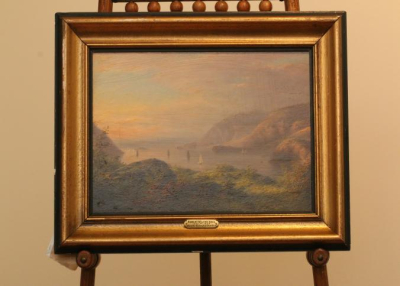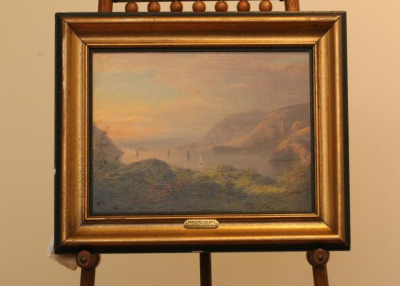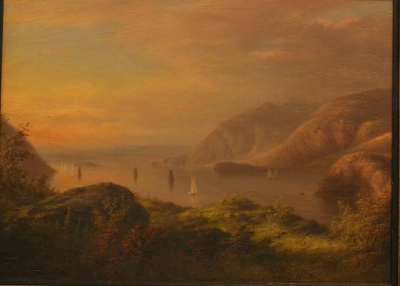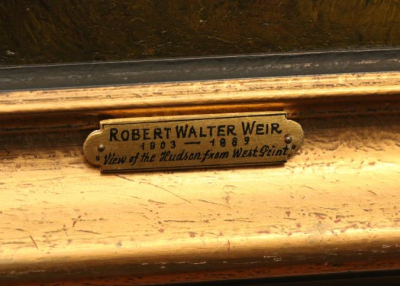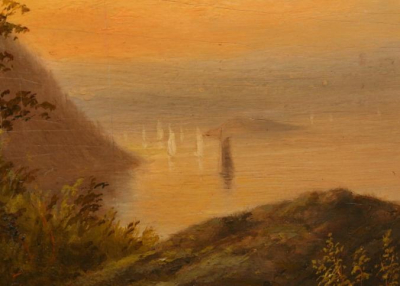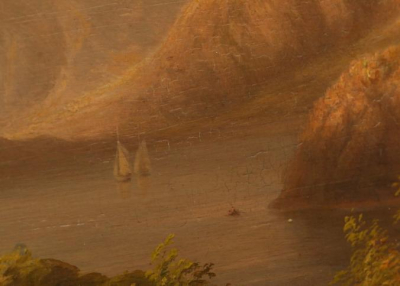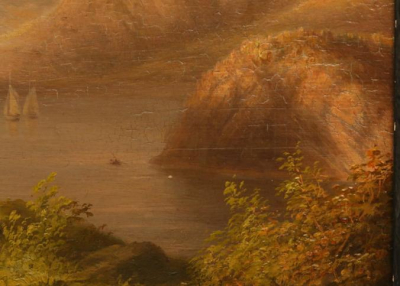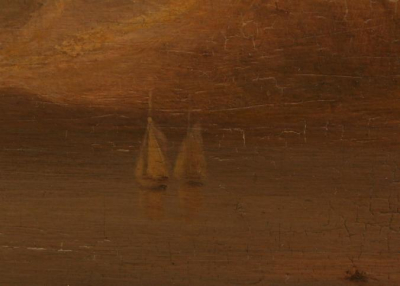Items located in Pleasant Valley, NY. Items include Hudson River School artwork, seascapes and framed lithographs. The Hudson River School of "Nature Painters" were painting from the mid-19ThC to the late 19thC. Although, they were actively painting views all across America, the scenes on the Hudson River are the most sought after. You have a rare opportunity to purchase these great "Views" now in this no-reserve auction. We also encourage you to come see us and preview the auction in-person.
Payment is due by Tuesday, May 23 at 3PM.
Pickup in Pleasant Valley, NY must be completed by Thursday, May 25 at 3PM.
All lots sold as is, where is. There is a 15% Buyers Premium for all lots purchased. Payment methods include cash, PayPal, MC, Visa, Discover or good check. You can make credit card payment online by going to your Member Area and selecting your invoice. To pay by PayPal, send money to info@aarauctions.com.
Payment is due by Tuesday, May 23 at 3PM.
Pickup in Pleasant Valley, NY must be completed by Thursday, May 25 at 3PM.
All lots sold as is, where is. There is a 15% Buyers Premium for all lots purchased. Payment methods include cash, PayPal, MC, Visa, Discover or good check. You can make credit card payment online by going to your Member Area and selecting your invoice. To pay by PayPal, send money to info@aarauctions.com.
Auction Info
Items located in Pleasant Valley, NY. Items include Hudson River School artwork, seascapes and framed lithographs. The Hudson River School of "Nature Painters" were painting from the mid-19ThC to the late 19thC. Although, they were actively painting views all across America, the scenes on the Hudson River are the most sought after. You have a rare opportunity to purchase these great "Views" now in this no-reserve auction. We also encourage you to come see us and preview the auction in-person.
Payment is due by Tuesday, May 23 at 3PM.
Pickup in Pleasant Valley, NY must be completed by Thursday, May 25 at 3PM.
All lots sold as is, where is. There is a 15% Buyers Premium for all lots purchased. Payment methods include cash, PayPal, MC, Visa, Discover or good check. You can make credit card payment online by going to your Member Area and selecting your invoice. To pay by PayPal, send money to info@aarauctions.com.
Payment is due by Tuesday, May 23 at 3PM.
Pickup in Pleasant Valley, NY must be completed by Thursday, May 25 at 3PM.
All lots sold as is, where is. There is a 15% Buyers Premium for all lots purchased. Payment methods include cash, PayPal, MC, Visa, Discover or good check. You can make credit card payment online by going to your Member Area and selecting your invoice. To pay by PayPal, send money to info@aarauctions.com.
Categories:
Framed 19thC o/b signed "R. W. Weir" lower left "View of the Hudson from West Point." Robert W. Weir (1803-1889). Featured in the Exhibition "This Perfect River-View": The Hudson River School and Contemporaries in Private Collections in the Highlands. The exhibit ran from July 20th to November 25, 2007 at the Putnam County Historical Society & Foundry School Museum in Cold Spring, NY. This painting was featured as plate #24 on page 42 of the 67 page catalog for the exhibition. It also bears the #16 tag from being on exhibit at the Historic Boscobel Home on the Hudson in Cold Spring, NY. Catalog description says oil on canvas. I believe this is an oil on board. Bio AskArt: Born in New York City, Robert Weir became more recognized for his teaching of art than his own paintings. As a youngster, he was befriended by painter John Wesley Jarvis and also received instruction from Robert Cooke, an English heraldic* artist. When he was a teenager, Weir's painting was so remarkable that his canvases sold in New York as the work of the Old Masters*.
From 1824 to 1827, he studied in Italy and in 1825 he worked with Pietro Benvenuti in Florence. Later he moved to Rome, where he lived with Horatio Greenough.
Returning to New York he set up his own studio. In 1834, he began a 42-year teaching career at the U.S. Military Academy at West Point, and his pupils included Ulysses S. Grant, Robert E Lee, and James Whistler as well as his own sons, John Ferguson and Julian Alden Weir.
He painted subjects from the novels of James Fennimore Cooper and Washington Irving as well as portraits and historical topics. In the mid-1930s, he painted his large Embarkation of the Pilgrims from Delft Haven, in Holland, which was installed in the Rotunda of the U.S. Capitol Building in 1843.
During the half century that Weir was most active in religious painting, other American artists showed little interest in painting religious subjects. Consequently, few paintings of the nature were exhibited at the American Academy of Fine Arts, the American Art-Union, or the National Academy of Design.
Weir is believed to have been a "leading practitioner of the religious genre in America during the years 1830 to 1880, when Biblical subjects were unpopular with both artists and patrons.
"Weir was essentially an academic painter who continually attempted to associate himself with the European artistic traditions from the Renaissance to his own time, as his religious paintings demonstrate."
Source:
Kent Ahrens, "The Religious Paintings of Robert Walter Weir," Antiques, April 1973
Boscobel label indicating that this work of art was part of the Exhibit: Home on the Hudson: Women and Men Painting Landscapes 1825-1875" that was held June 7, 2009 - September 7, 2009. . 9.5" x 13.25" sight, 10" x 14" board
More Details
Framed 19thC o/b signed "R. W. Weir" lower left "View of the Hudson from West Point." Robert W. Weir (1803-1889). Featured in the Exhibition "This Perfect River-View": The Hudson River School and Contemporaries in Private Collections in the Highlands. The exhibit ran from July 20th to November 25, 2007 at the Putnam County Historical Society & Foundry School Museum in Cold Spring, NY. This painting was featured as plate #24 on page 42 of the 67 page catalog for the exhibition. It also bears the #16 tag from being on exhibit at the Historic Boscobel Home on the Hudson in Cold Spring, NY. Catalog description says oil on canvas. I believe this is an oil on board. Bio AskArt: Born in New York City, Robert Weir became more recognized for his teaching of art than his own paintings. As a youngster, he was befriended by painter John Wesley Jarvis and also received instruction from Robert Cooke, an English heraldic* artist. When he was a teenager, Weir's painting was so remarkable that his canvases sold in New York as the work of the Old Masters*.
From 1824 to 1827, he studied in Italy and in 1825 he worked with Pietro Benvenuti in Florence. Later he moved to Rome, where he lived with Horatio Greenough.
Returning to New York he set up his own studio. In 1834, he began a 42-year teaching career at the U.S. Military Academy at West Point, and his pupils included Ulysses S. Grant, Robert E Lee, and James Whistler as well as his own sons, John Ferguson and Julian Alden Weir.
He painted subjects from the novels of James Fennimore Cooper and Washington Irving as well as portraits and historical topics. In the mid-1930s, he painted his large Embarkation of the Pilgrims from Delft Haven, in Holland, which was installed in the Rotunda of the U.S. Capitol Building in 1843.
During the half century that Weir was most active in religious painting, other American artists showed little interest in painting religious subjects. Consequently, few paintings of the nature were exhibited at the American Academy of Fine Arts, the American Art-Union, or the National Academy of Design.
Weir is believed to have been a "leading practitioner of the religious genre in America during the years 1830 to 1880, when Biblical subjects were unpopular with both artists and patrons.
"Weir was essentially an academic painter who continually attempted to associate himself with the European artistic traditions from the Renaissance to his own time, as his religious paintings demonstrate."
Source:
Kent Ahrens, "The Religious Paintings of Robert Walter Weir," Antiques, April 1973
Boscobel label indicating that this work of art was part of the Exhibit: Home on the Hudson: Women and Men Painting Landscapes 1825-1875" that was held June 7, 2009 - September 7, 2009. . 9.5" x 13.25" sight, 10" x 14" board
High Bid:
$9,000.00 – briggs
Auction Type: One Lot
Quantity: 1
Bidding has closed on this lot

